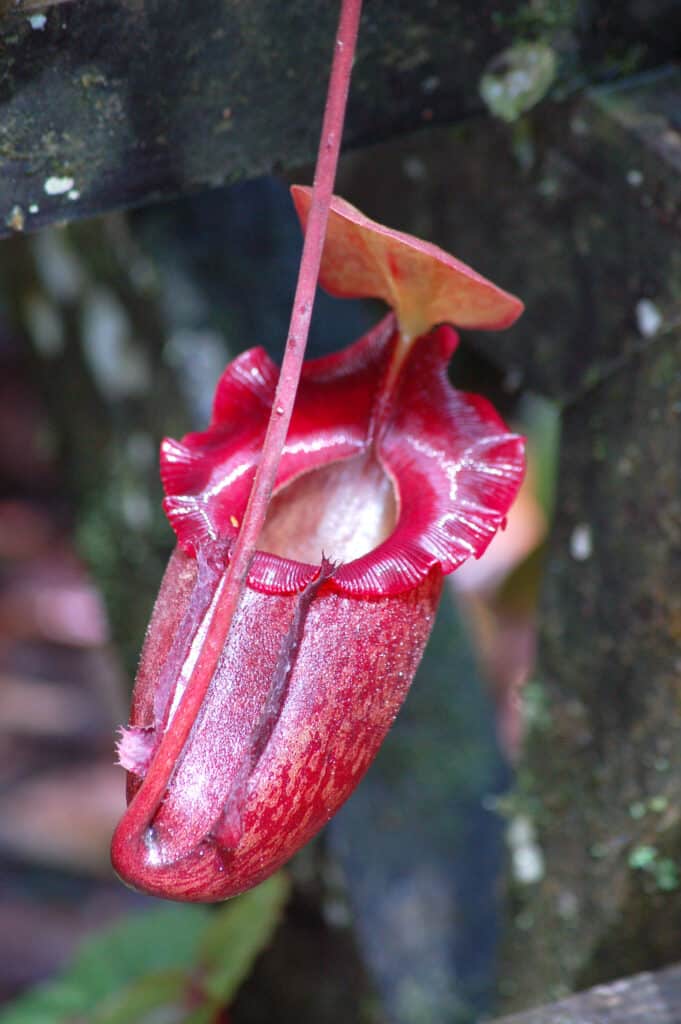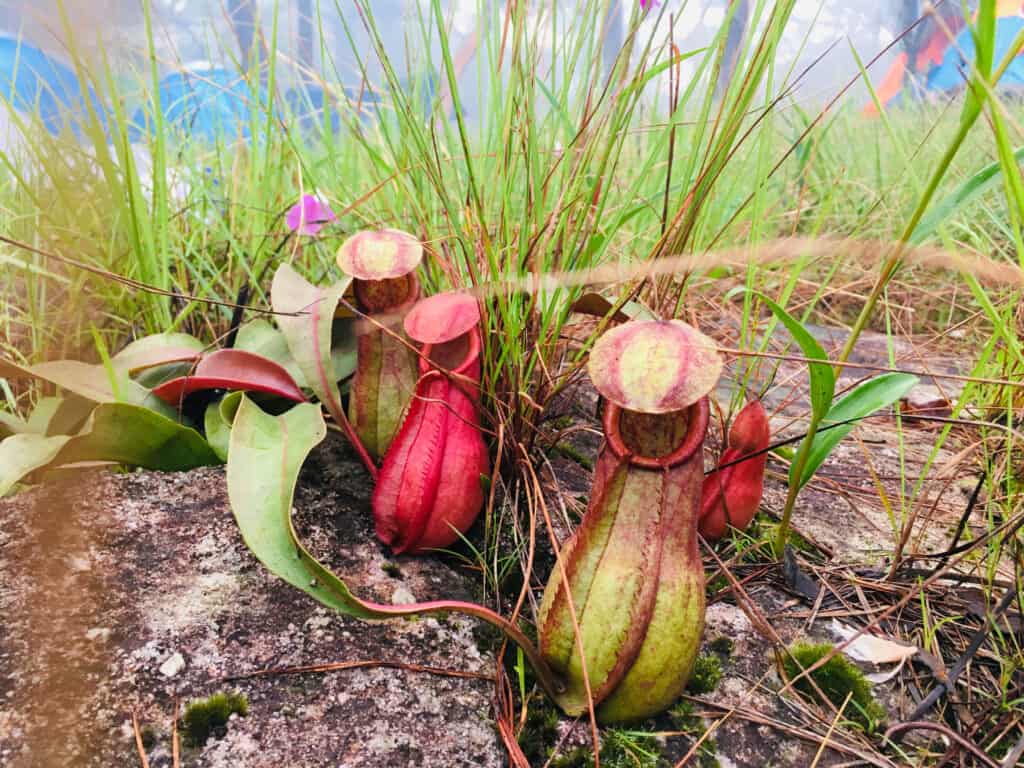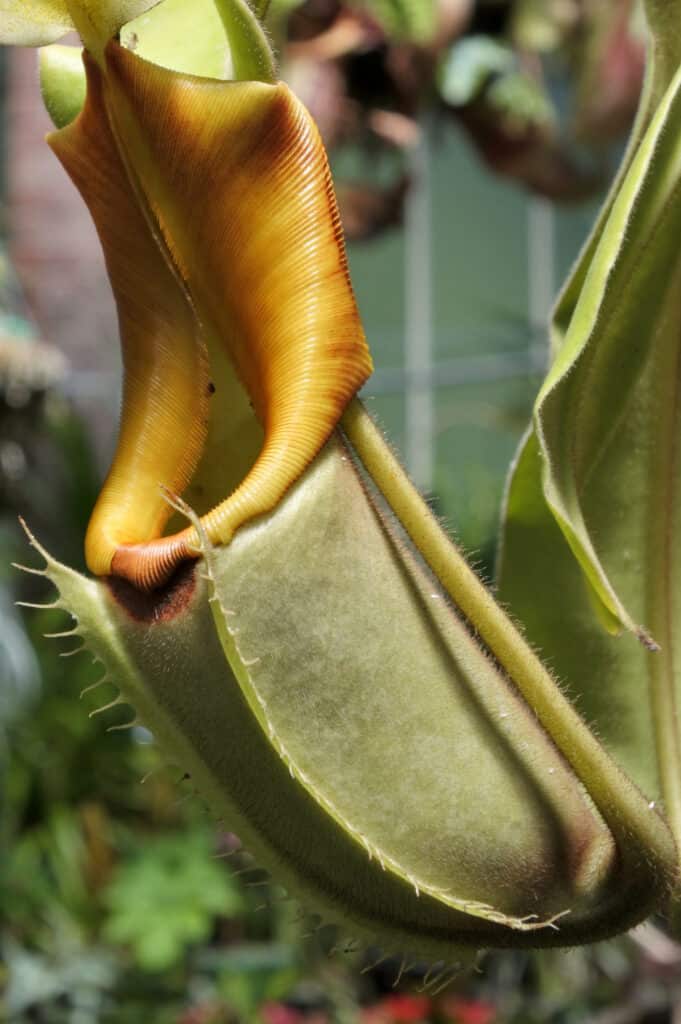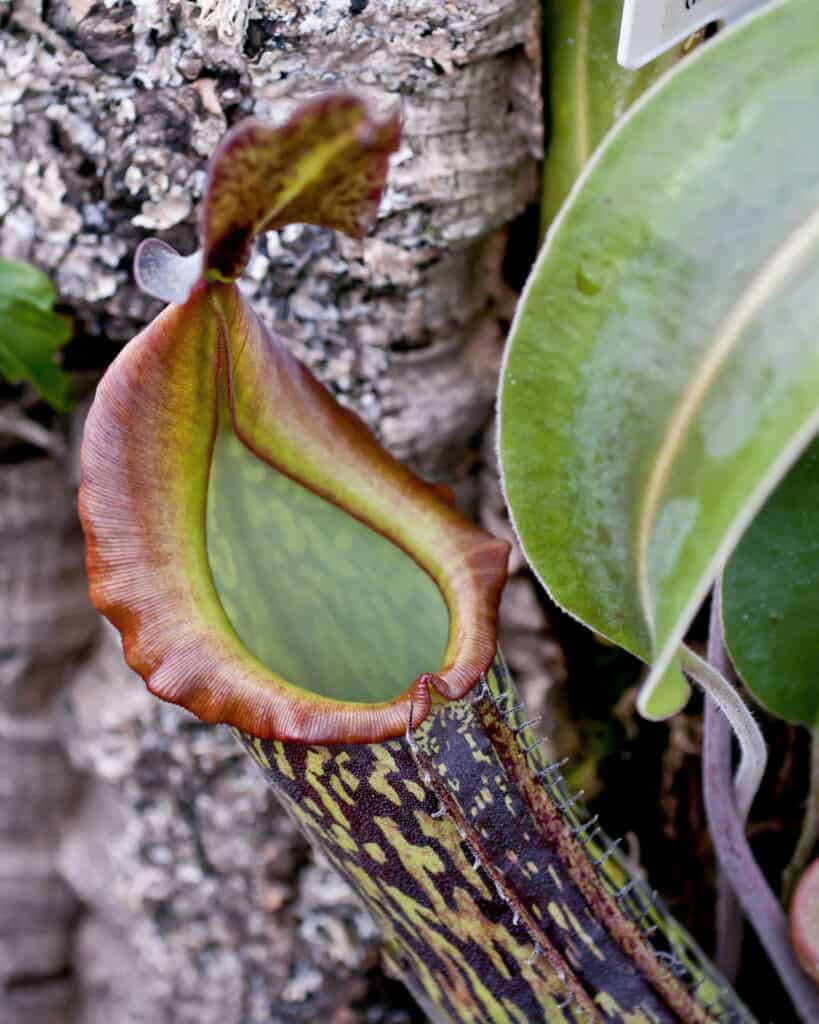Carnivorous plants are truly fascinating. When we think about carnivores, we generally think about animals, but the truth is that plants can actually consume animals as well! The most well-known example of this is the Venus flytrap.
However, there are many others as well. In fact, there are carnivorous plants that are much more imposing in size than the Venus flytrap. These also have the ability to catch larger prey – not only insects, but also smaller invertebrates, and even mammals in some cases!
Read on to learn more about the largest carnivorous plant species!
What Is a Carnivorous Plant?

There are about 630 species of carnivorous plants currently on record.
©sawinimages/Shutterstock.com
Carnivorous plants are flowering plants that consume and kill animals in order to obtain nutrition from their bodies. There are three attributes that distinguish carnivorous plants from other types of plants. Carnivorous plants are unique in that they capture and kill prey, have some sort of mechanism to allow digestion of this prey, and benefit from nutrients that they get from the prey.
There are about 630 species of these plants currently on record. These plants eat small animals, including insects, crustaceans, spiders, and other invertebrates. In fact, the larger ones can also eat small vertebrates, such as rodents and lizards.
Carnivorous plants can do this by using specialized leaves that trap prey. They have different mechanisms that they use to lure prey, including bright colors, strongly scented nectar, leaf extensions, and many more.
Once the plant has captured and killed the prey, it and/or its partner organisms digest the prey. The plant will then absorb nutrients from the body of the prey. Most of these plants can grow without these nutrients, but they will grow and reproduce much more quickly if they are able to capture prey.
However, there are also plants that kill animals that aren’t all carnivorous. For example, the three species of Devil’s Claw in the Martyniaceae family often catch flies, but they don’t derive nutrition from these flies. Most likely, their sticky leaves just incidentally catch the flies when the true purpose of the leaves is to protect them against predators.
When plants kill other organisms in a seemingly “intentional” way but do not seem to derive nutritional benefits, they are referred to as murderous plants rather than carnivorous plants.
The Largest Carnivorous Plant Species in the World

The biggest pitcher plant in the world, the red
Nepenthes RajahPitcher Plant, is native to Mount Kinabalu and neighboring Mount Tambuyukon, both located in Kinabalu National Park, Sabah, Malaysian Borneo.
©iStock.com/HotHibiscus
The largest carnivorous plant species in the world is the giant montane pitcher plant (Nepenthes rajah). The iron-shaped traps on this plant can grow to be up to 16.1 inches (41 centimeters) tall. The traps contain a pitcher, for which the plant is named, that has the capacity to hold about 9 gallons (3.5 liters) of fluid.
This plant is a scrambling vine. The stem typically grows along the ground, but if it’s able to elevate itself, it will. The stem is fairly thick, at 1.2 inches (3 centimeters) or more, and it can grow to be between 9.8 and 19.7 feet (3 and 6 meters) long.
Flowers sprout off the apex of the main stem. They generally have a brownish-yellow color and emanate a strong sugary smell. This is a dioecious plant, meaning that each individual can produce only male or only female flowers.
Features Involved in Trapping Animals

Tropical pitcher plants or monkey cups (
Nepenthes rajah) in jungle. These giant montane pitcher plants mostly catch insects, but have been known to catch and kill small mammals as well.
©iStock.com/GinkMusaico
The leaves of this plant grow along the stem, at fairly regular intervals. A tendril comes from the end of each leaf. At the tip of the tendril, there is a small bud. When this bud activates physiologically, it can initiate development into a trap. Basically, the pitchers in these plants are modified leaves after activation.
Once the pitcher has formed, the trap includes the main pitcher cup. The cup has a lid or operculum that serves to stop rainwater from entering and diluting or displacing the contents. There is also the peristome, a ring of hard tissue that surrounds the entrance to the cup.
There is a pair of wings that runs down the front of the cup, seemingly to guide insects to the mouth. Interestingly, when the pitchers are growing at a higher elevation, these wings are either absent or significantly reduced. This makes sense since most of the prey will fly right into the mouth of these cups.
These plants tend to have far more terrestrial pitchers than aerial ones, as it’s fairly rare for the vine to climb up that far off the ground. They have very large glands, which secrete nectar, covering its pitchers. The giant montane pitcher plant can also flower at any time of the year.
Prey of the Largest Carnivorous Plant Species

Nepenthes Rajah Pitcher carnivorous flytrap plant is the biggest pitcher plant in the world.
©iStock.com/chameleonseye
Although the majority of prey of the giant montane pitcher plant are insects (mostly ants), these aren’t the only things it eats. Other arthropods can fall prey to this plant as well.
More impressively, this plant can even trap vertebrates and sometimes small mammals. There are at least two incidents on record where drowned rats were found in pitchers of this plant.
Lizards, frogs, and birds have also been found dead inside these pitchers, although this is not normal. It’s likely that these animals were either sick or that they made the mistake of seeking water or shelter in the pitchers.
How Does the Largest Carnivorous Plant Species Catch Prey?

The giant montane pitcher plant uses a pitfall trapping mechanism to capture prey.
©iStock.com/habari1
Carnivorous plants have many basic trapping mechanisms. The giant montane pitcher plant falls into the category of a pitfall trap. These are leaves that have been modified into pit-like structures, as we have described.
The simplest plants that employ this mechanism have a whorl of leaves with a sealed base that can fill with rainwater and drown prey animals that fall in.
The more sophisticated pitfall traps, like the giant montane pitcher plant, have leaves with complex modifications that allow each leaf to be a separate trap. They can have bright colors, strong scents, or some other type of mechanism to attract prey. Some of them have hairs that direct the prey to the opening of the trap.
Usually, the lip of the trap is slippery, making it easy for the prey to fall in. The plant can pump water in and out of the trap as necessary, and the leaves are also often capable of releasing digestive enzymes and adjusting the pH of the water.
The photo featured at the top of this post is © Kuttelvaserova Stuchelova/Shutterstock.com
Thank you for reading! Have some feedback for us? Contact the AZ Animals editorial team.






